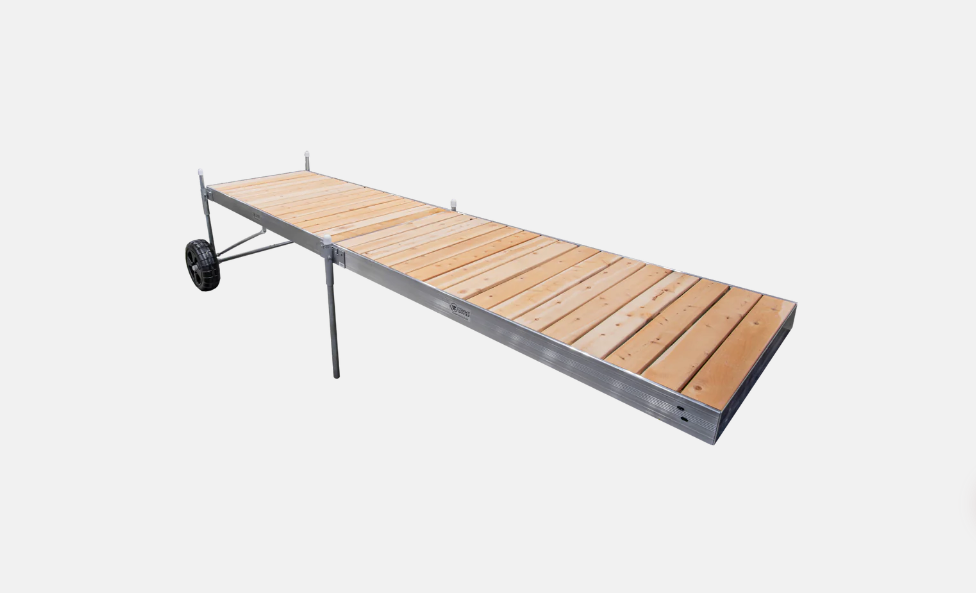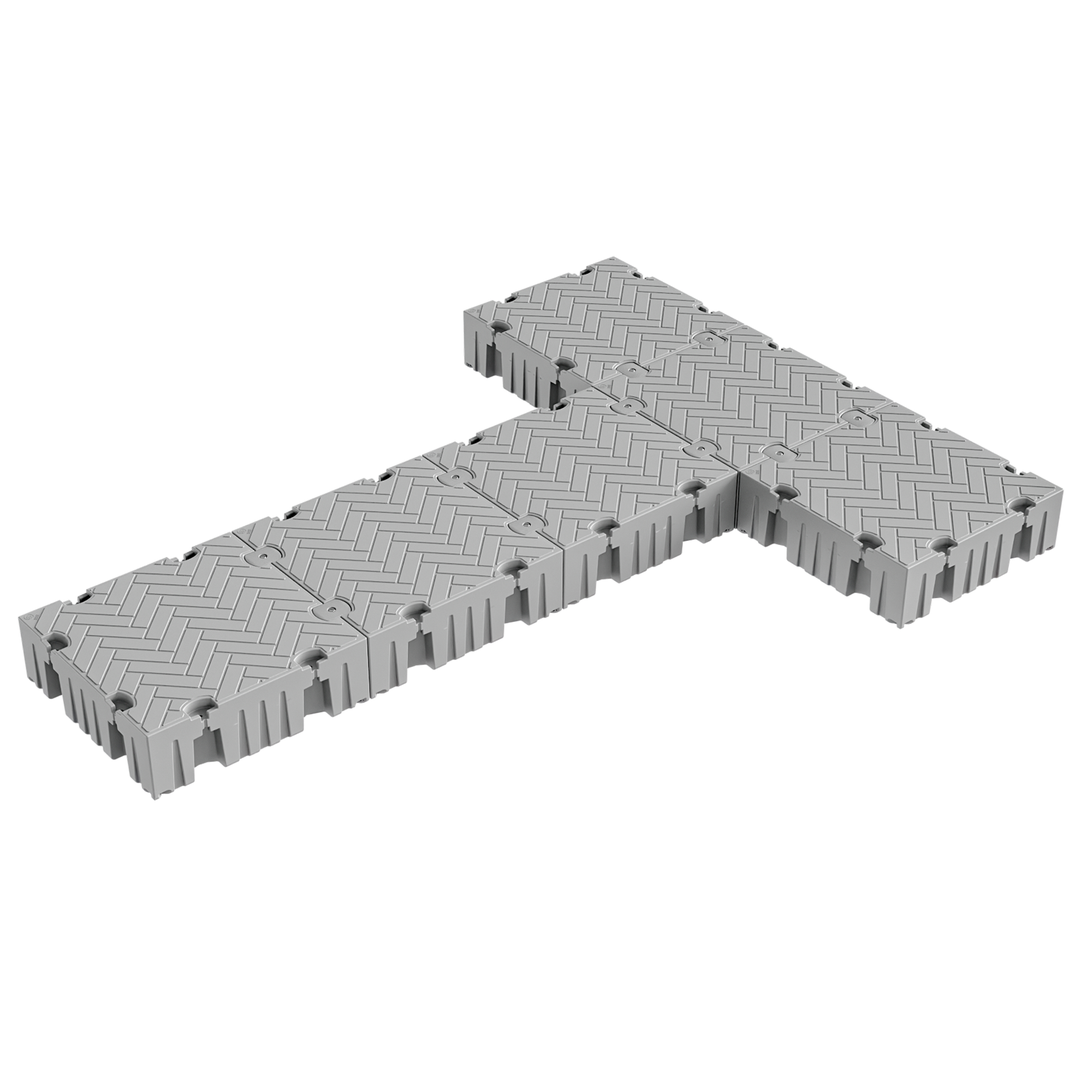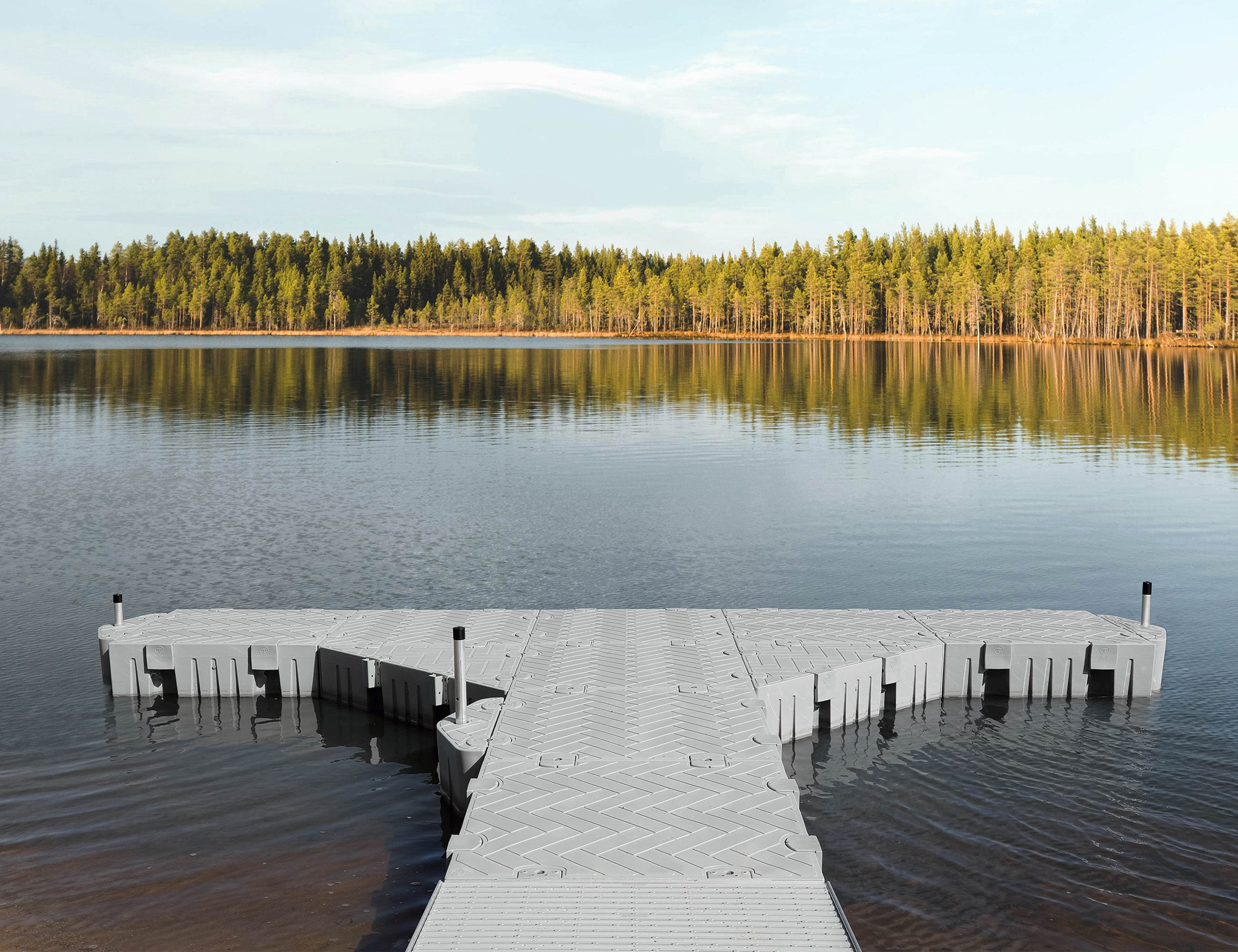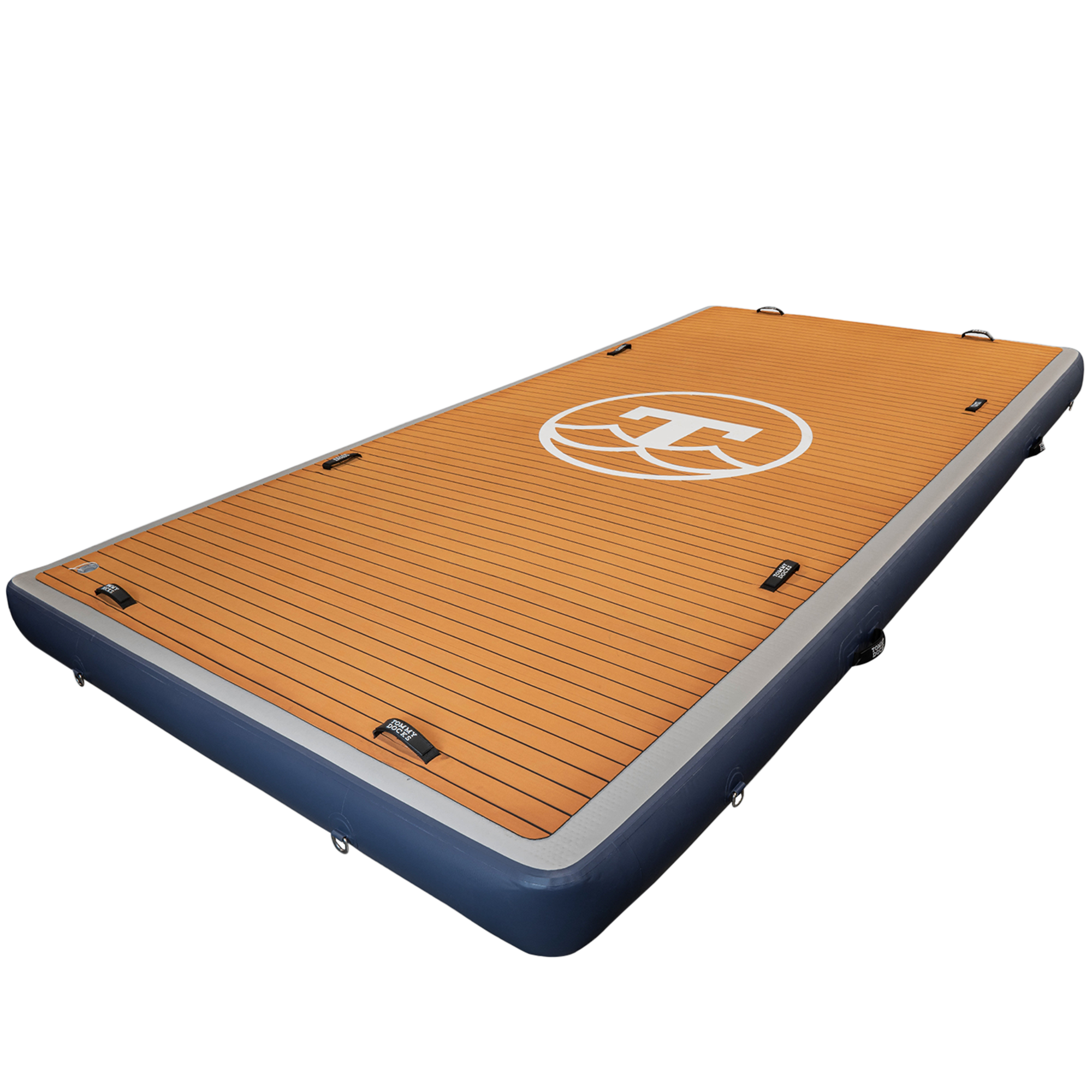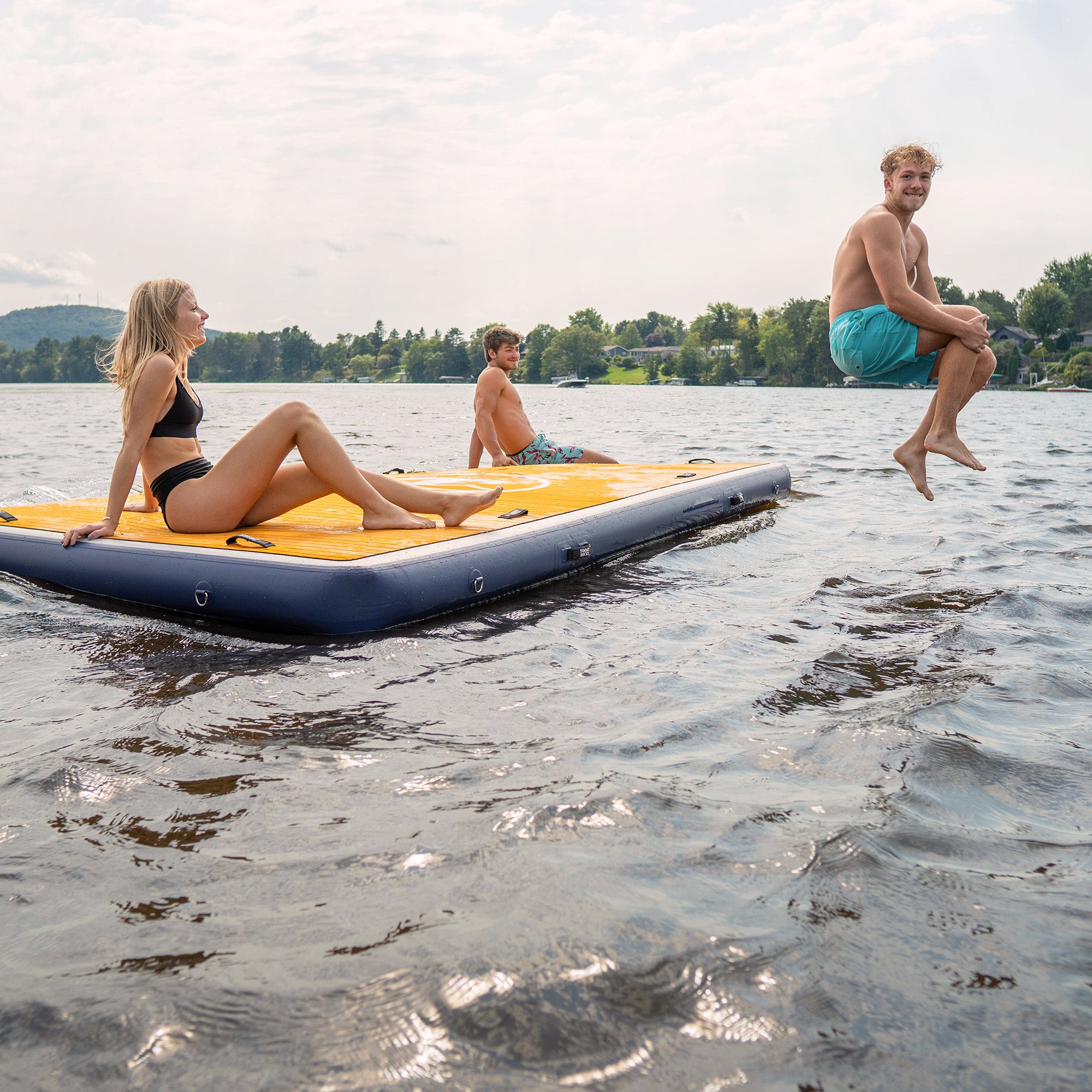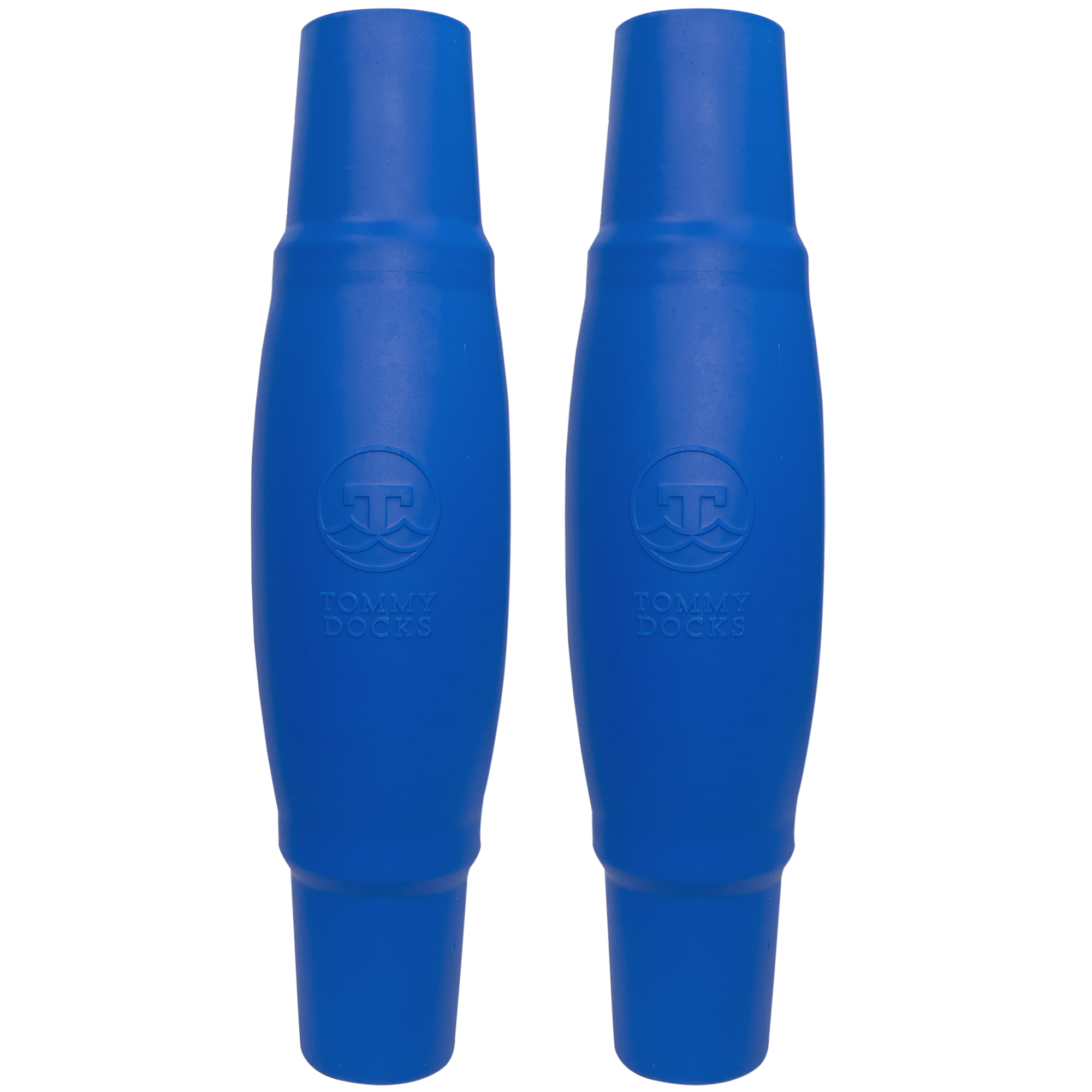Are you planning to build a dock this season but trying to think ahead about the best strategy for winterizing? Do you have a sizeable waterfront property and wish you could move your dock around instead of committing to one place? Or do you have an existing dock but wish you could more easily remove it from the water during the off-season?
We have a solution for you in each of these scenarios: wheel-in docks. Why should you attach wheels to your dock, and how do you do it?
Here’s our Tommy Docks' ultimate guide to wheel-in docks (AKA roll-in docks) to answer all your questions. We’ll highlight the ins and outs of wheel-in docks and recommend the best products to get you started.
Why Install Wheels on Your Dock?
Wheels are the perfect solution to being able to easily roll your dock in and out of the water whenever necessary.
How does a rolling dock design make life easier? Here are three ways:
- Easier winterization – Stationary docks should not be left in the water in freezing temperatures or during severe storms. Still, removing a fixed dock can take time and effort. A roll-in and roll-out solution allows you to protect your dock and quickly get it out of the water, even if you get notice of a quickly approaching storm or freeze warning.
- Easier installation – Building a dock yourself becomes much simpler when you can put it together on land and simply roll it into the water when you’re finished. After that, all you need to do is attach the pipes, and you’re good to go.
- Easier to change locations – Having a dock with wheels allows you to swap dock locations on your property should the need arise. That way, if part of the shoreline is better during one season than the next, you can always ensure your dock is in the sweet spot for fishing, swimming, docking your boat, or whatever suits your needs.
Installing wheels on your dock boosts versatility and convenience. Outfitting your dock with wheels also helps you to extend the life of the dock since you’ll be able to act quickly to protect it from the weather. This time-saving feature will help you get the most out of your investment.
Types of Wheel-In Docks
There are two main wheel-in docks types: stationary and floating. The concepts are similar — wheels attached to docks, but the design is different for each.
Wheel-In Stationary Docks
Wheel-in stationary docks essentially replace some of the dock’s pipes and footpads with pipes and wheels on either side of the dock connected by an axle underneath. These sets of wheels are placed toward the shore and supplemented by a pair of regular pipes as the water gets deeper. Varying amounts of wheels are needed depending on the length of the dock.
Wheel-In Floating Docks
Beyond attachable wheels for stationary dock systems, Tommy Docks also offers float drums with wheels for floating docks. This clever wheel doubles as a float, allowing floating dock owners to install and remove their floating dock from the water easily. The number of wheel floats you’ll need depends on the size of your dock.
Let’s circle back to roll-in stationary docks and answer some FAQs.
Frequently Asked Questions About Stationary Wheel-In Docks
Here are some common questions and concerns about wheel-in docks:
Can You Convert a Stationary Dock to a Roll-In Dock?
Yes! To convert your fixed dock to a wheel-in dock, you’ll need to buy at least one roll-in-dock wheel kit, depending on the size of your dock. You can follow our easy, step-by-step instructions to install the wheels on your dock. The wheels will simply replace the current pipes. Video guide coming soon!
What Type of Lake Bottom is Needed for a Wheel-In Stationary Dock?
It’s important to note that the wheel-in system doesn’t work in all lake or river bottom conditions. We only recommend using the wheels in bodies of water with hard, sandy, or gravel bottoms. Why? The wheels are designed with weep holes that fill with water to help anchor the dock in place. If used in a mucky environment, the wheels could fill with muck and get stuck, defeating the purpose.
What Kind of Wheels Should You Put on a Fixed Dock?
Only use wheels that are specifically engineered for use on docks. Roll-in dock wheels must withstand extended periods of complete water immersion and be sturdy enough to support your dock and keep it in place.
Do You Have to Remove Your Fixed Dock from the Water for Winter?
We recommend removing your dock from the water in the winter if you live in an area with freezing temperatures. We also advise rolling your dock out of the water when facing a severe storm warning.
“It is very easy for ice to totally destroy a dock. The freezing water expands, melts, refreezes and expands again with enough pressure to damage any material left in the water. Large ice floats can also move with the current, in the process getting caught on structures, piling up and destroying anything in their path,” says a dock expert interviewed by Cottage Life. “A pipe dock needs to be removed, and a floating dock should either be removed or relocated to a sheltered spot.”
Taking these protective measures will extend the life of your dock and protect your investment.
Can You Use Wheels on Any Size or Shape of Stationary Dock or at Any Water Depth?
No. The max dock length allowable for a roll-in kit is a 16' straight Tommy Dock in a maximum of 5ft of water. However, you can purchase additional roll-in kits to accommodate a longer dock. Purchase two kits for any dock over 16’ and three kits for docks over 24’. We don’t recommend exceeding a 32’ dock length. The wheels are only for use with straight dock configurations.
Best Wheel-in Dock Kits
Besides our stand-alone roll-in dock wheel kits, Tommy Docks offers a full catalog of complete roll-in dock kits. You can choose from three dock lengths and four kinds of beautiful decking. Our wheel-in dock kits are extremely DIY-friendly, making docking easier and more versatile than ever.

